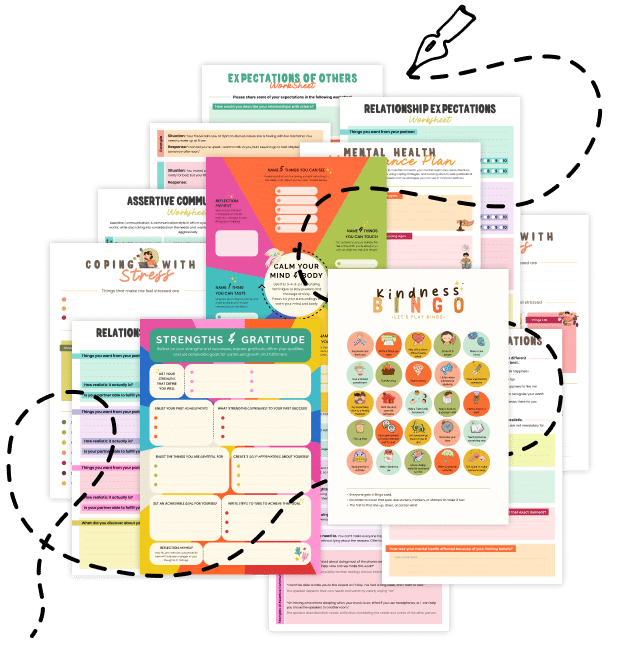20 Things You Should Know About Sensory Gating
Discover Sensory Gating—how your brain filters out unnecessary stimuli to help you focus and maintain clarity. Learn 20 key insights, practical tips, and applications to harness this natural filtering mechanism for better mental performance.
1. What Is Sensory Gating?
Sensory Gating is a neurological process where the brain filters out repetitive, irrelevant, or unimportant information from the constant stream of sensory input. This helps prevent sensory overload and allows you to focus on what truly matters.
2. Why It’s Important
Without sensory gating, every sound, sight, or touch could flood your consciousness, making it difficult to concentrate or respond appropriately. By filtering out background noise, your brain conserves energy and maintains better cognitive function.
3. The Brain’s “Door Bouncer”
Think of it like a doorman selecting which stimuli get into the “club” of your conscious awareness. This guard ensures that only relevant information receives the spotlight, while unimportant details are kept outside.
4. Sensory Gating Role in Everyday Life
From focusing on a conversation in a noisy café to quickly spotting a friend in a crowd, it underpins daily tasks and helps you navigate complex environments efficiently.
5. Links to Attention and Focus
A robust sensory gating mechanism allows you to tune out distractions. This improved attention can enhance tasks like reading, studying, or any activity requiring sustained mental effort.
6. Variability Among Individuals
Not everyone’s sensory gating filters are equally strong. Some people are more sensitive to background stimuli (e.g., those with high sensory processing sensitivity), while others easily filter out most distractions.
7. Over- vs. Under-Filtering
If your brain over-filters, you might miss important cues in your environment. If it under-filters, you could feel overwhelmed by stimuli. Finding balance is crucial for optimal mental functioning.
8. Sensory Gating Role in Mental Health
Research indicates that diminished sensory gating can be associated with conditions like schizophrenia, ADHD, and autism spectrum disorders. Understanding these gating differences can inform more targeted therapeutic approaches.
9. Can Sensory Gating Improve?
Yes—like many cognitive processes, it can be trained. Techniques that bolster attention and stress management often enhance your ability to filter out irrelevant stimuli.
10. Stress and Sensory Overload
High stress levels can disrupt sensory gating, making everyday noises or visual clutter feel overwhelming. Learning stress-reduction strategies is key to maintaining a healthy filter.
11. Mindfulness Practices
Mindfulness and meditation help you become more aware of both internal and external stimuli. This increased awareness, paradoxically, can lead to better gating—because you learn to observe without automatically reacting.
12. Cognitive Behavioral Tools
Techniques from Cognitive Behavioral Therapy (CBT) can help reframe how you perceive and respond to stimuli. By reshaping your thought patterns, you reduce the stress and anxiety that undermine effective sensory gating.
13. Role of Sleep
Quality sleep is essential. During rest, your brain consolidates memories and resets neural processes, including those involved in filtering stimuli. Chronic sleep deprivation can weaken sensory gating, leading to heightened distractibility.
14. Nutrition and Brain Health
A balanced diet supports neural function. Antioxidants, omega-3 fatty acids, and other nutrients help maintain healthy brain processes, potentially contributing to more efficient gating of sensory information.
15. Physical Activity
Regular exercise increases blood flow and supports neural plasticity. By enhancing overall brain health, physical activity can also improve its functions over time.
16. Sensory Fasting
Temporarily reducing exposure to certain stimuli—like noise or screen time—can recalibrate your sensory gating. This approach can improve mental clarity and reduce the strain on your filtering processes.
17. Workplace Strategies
Creating a quieter workspace, using noise-cancelling headphones, or simplifying your visual environment can help your brain gate out distractions, leading to better productivity.
18. Tech Tools
Apps and gadgets designed to minimize distraction (e.g., website blockers, ambient noise generators) can support sensory gating. By reducing digital clutter, you ease the brain’s filtering burden.
19. Social and Environmental Factors
Cultural norms and personal experiences also shape how you filter stimuli. Over time, your environment can train your gating system to focus on or ignore specific cues, from language patterns to social signals.
20. Related Topics to Explore
- Task Switching Costs: Understanding how frequent context changes affect attention.
- Mindful Acceptance: Observing stimuli without judgment to ease overwhelm.
- Directed Attention Fatigue: Recognizing when sustained focus drains mental resources.
- Neurobics: Brain exercises that diversify sensory and cognitive pathways for better agility.
Quick Tips for Optimizing Sensory Gating
- Practice Mindfulness: Brief, daily mindfulness sessions help you stay calm under sensory load.
- Manage Stress: Use relaxation techniques and breaks to keep stress from overwhelming your filters.
- Declutter Your Environment: Simplify your workspace and surroundings to reduce unnecessary stimuli.
- Use Targeted Tools: Noise-cancelling headphones or screen-time management apps can help filter out digital or auditory distractions.
- Stay Physically Active: Exercise supports overall brain health and can improve your gating mechanisms over time.
Sensory Gating is a crucial process that determines how we handle the constant flow of information bombarding our senses. By managing stress, practicing mindfulness, and optimizing our environment, we can strengthen our natural filters and maintain better focus and mental clarity. Whether you’re tackling a demanding project or simply navigating a noisy world, cultivating healthy sensory gating can significantly enhance your well-being and productivity.

